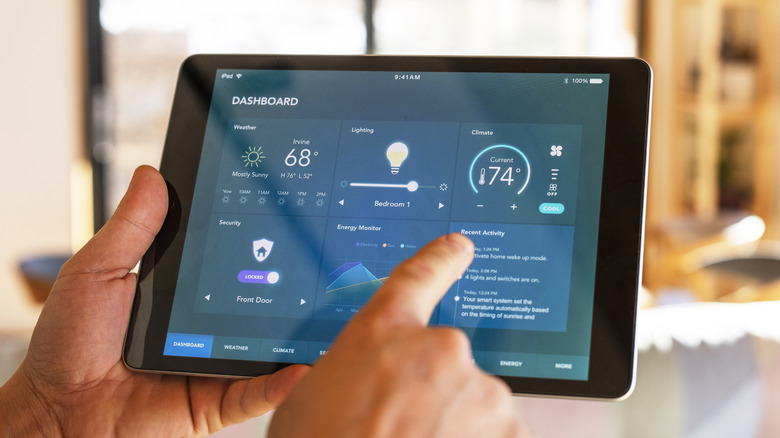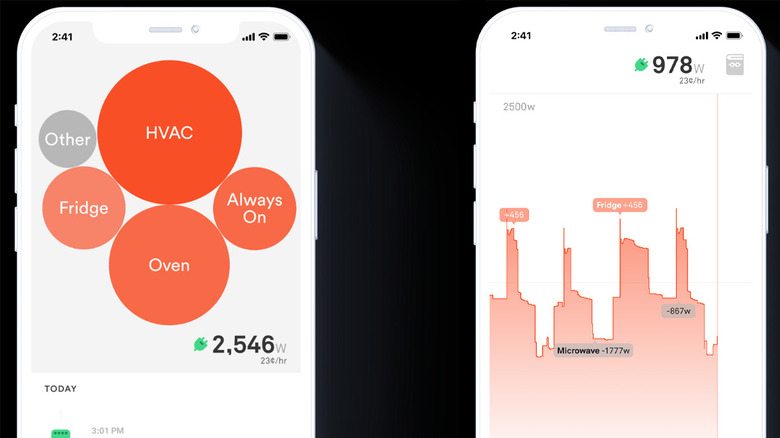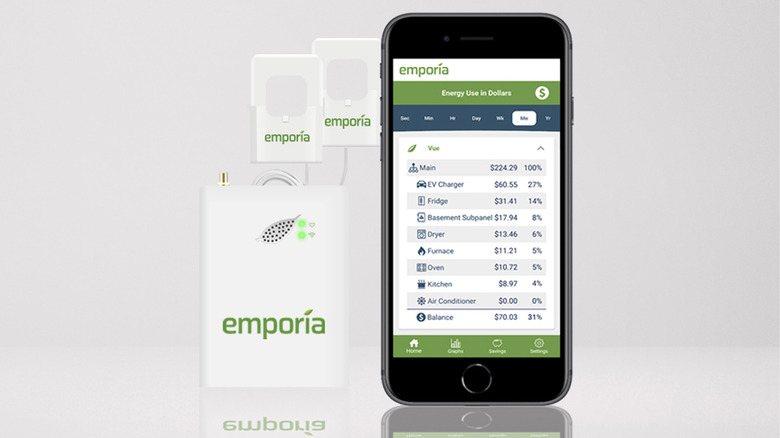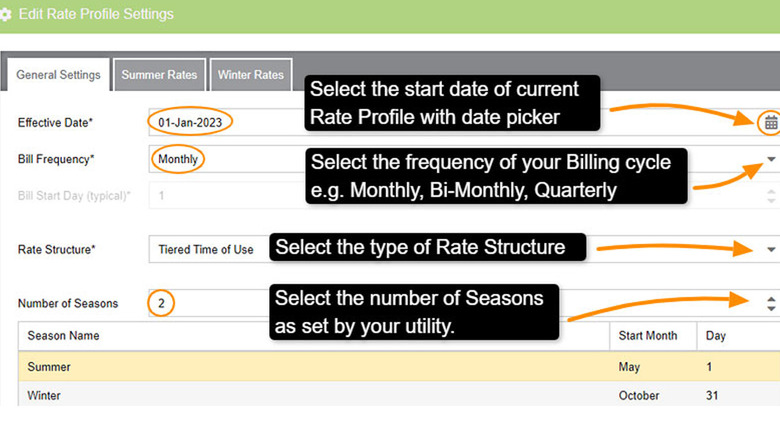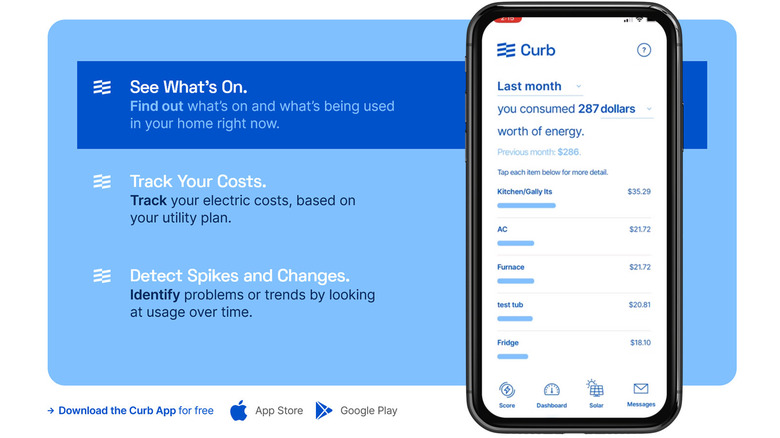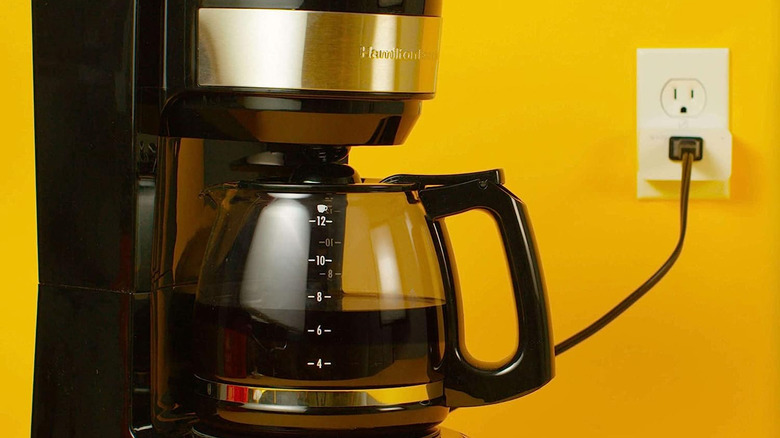5 Of The Best Home Energy Monitors Worth Checking Out In 2023
We may receive a commission on purchases made from links.
If you're at all concerned with saving energy, especially during the hot summer months, then you'll be interested in grabbing a home energy monitor. There are a lot of them on the market, and while many of them function largely the same, there are some standout options available. The best monitors will be ones that make keeping up with energy usage easy, and something that would connect with a variety of different smart hubs like Amazon Alexa or Google Assistant.
You'll also want to have quick access to things like turning lights on and off, or seeing if leaving your PC on all day really makes a big difference. Some electric companies encourage you to use less electricity during peak hours, and a home energy monitor is a good way to make that happen. It can be as simple as choosing to do your laundry at a different time than usual, but it definitely gets easier with a monitor at your fingertips.
Sense Home Energy Monitor
The Sense Home Energy Monitor easily connects to your voice control apps, so that's a major plus working in its favor. This gives you a play-by-play each day showing you things like when you turned on your oven, how often you used your microwave, and even when you sat down to play your PS5. It has a lot of features like that, all in one easy-to-read place, so it's a very convenient way to measure your power.
With real-time readings, you're able to see when you're using the most electricity versus the least, and that should help you adjust your uses accordingly. The only downside to this is the price, and it'll cost you about $300. You are given a 120-day money back guarantee if you don't like what it's offering, so you do have that working in your favor. However, Sense says on its website the average customer does save up to 8% on their bill. The monitor could end up paying for itself rather quickly.
Emporia Vue: Gen 2 Whole Home Energy Monitor
Emporia has all sorts of options for would-be energy savers out there. If you're looking for an all-encompassing option for your home, you can snag the Emporia Vue: Gen 2 Whole Home Energy Monitor.
This plugs right into your breaker box, much like the Sense option, but it comes at a much cheaper price. This will only run you $85, with the trade-off being it is less feature-rich. You won't have voice control with Emporia's device, but it should work practically the same for managing energy. You'll be able to monitor everything in real time, and you can add additional sensors if you want to monitor more as well.
You can opt to buy a bundle that comes with these extra sensors if you envision the need to monitor more than the base kit offers. You can bundle it with up to 16 sensors, and it will be cheaper to buy it all at once instead of separately.
Eyedro
Eyedro is another route you can take for a home energy monitor, and there are four different models to choose from. The cheapest one is the Ethernet Eyedro connection for $129, but that means you won't be able to take advantage of your home's Wi-Fi connection, and instead will be tethered to your modem/router's location.
This monitor comes in somewhere between Emporia and Sense when it comes to features. You'll get Amazon Alexa support with Eyedro, but you won't have any other voice assistant options like Google Assistant. You're able to compare your energy bills to previous ones in an effort to see if your usage is actually lowering the bill, which is a big part of getting one of these monitors in the first place. You can opt for a sensor that will tap into your solar panels if you have them as well, but you'll need to spend $200 minimum for that to happen.
Curb Energy Monitor
The Curb Energy Monitor comes in three different variations, but most energy savers would likely be okay with the standard Curb device that comes with 10 sensors. This means you'll be able to hook it up to your major appliances and have some extra connections to spare. The CurbPro bumps it up to 18, but you probably won't need to have that many connections to track your energy usage.
Like all the other monitors, you can look at everything in real time with Curb, and it will work with solar power. The one downside to this is you will have to fill out a form if you're interested in purchasing the energy monitor instead of having a front-facing price like the other options. That may not be a big deal to you, but the convenience of buying a monitor directly from the official website or Amazon storefront is lost here with the Curb.
Wyze Plug
If you're looking for a more cost-effective way to measure power consumption, and you're only interested in certain appliances, a smart plug could be for you. The Wyze Plug can be bought in a pair for $20, and anything you plug into that socket can be measured. This works for things like your TV, Xbox, microwave, etc. The downside is you're not going to be measuring your entire house's energy consumption, but that's what the other options are for.
The Wyze Plug comes with some cool features, too. If you're on vacation somewhere, you can actually set your plug to a "vacation" mode that will randomly turn your stuff on and off to make it look like somebody is at home using it. It responds to both Google Assistant and Amazon Alexa, so your heavy hitters are covered. You can put all of the plugs into the Wyze app and it works exactly the same as the other apps mentioned before.
The main difference here is you won't have a main hub installed into your breaker box. Eventually, the cost of plugs will overcome the initial cost of having an energy monitor installed, so don't go overboard.
